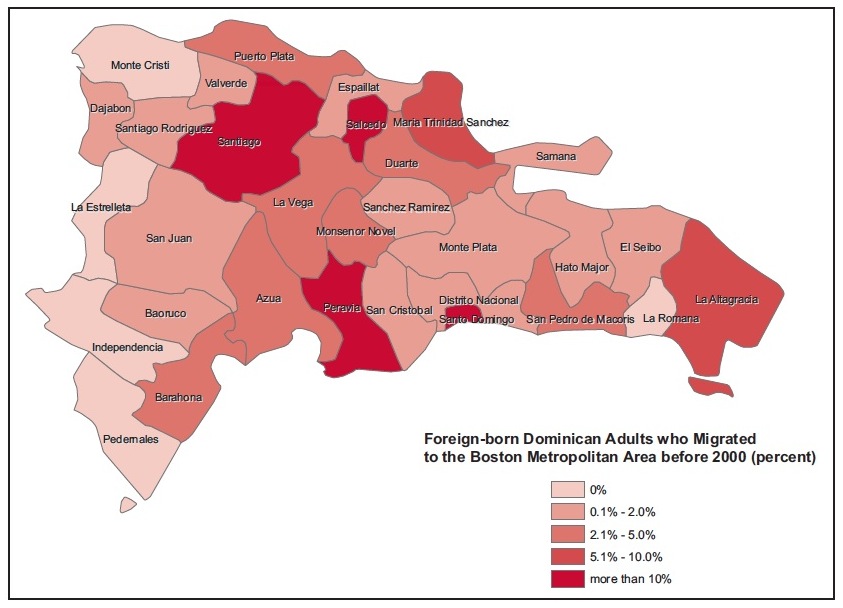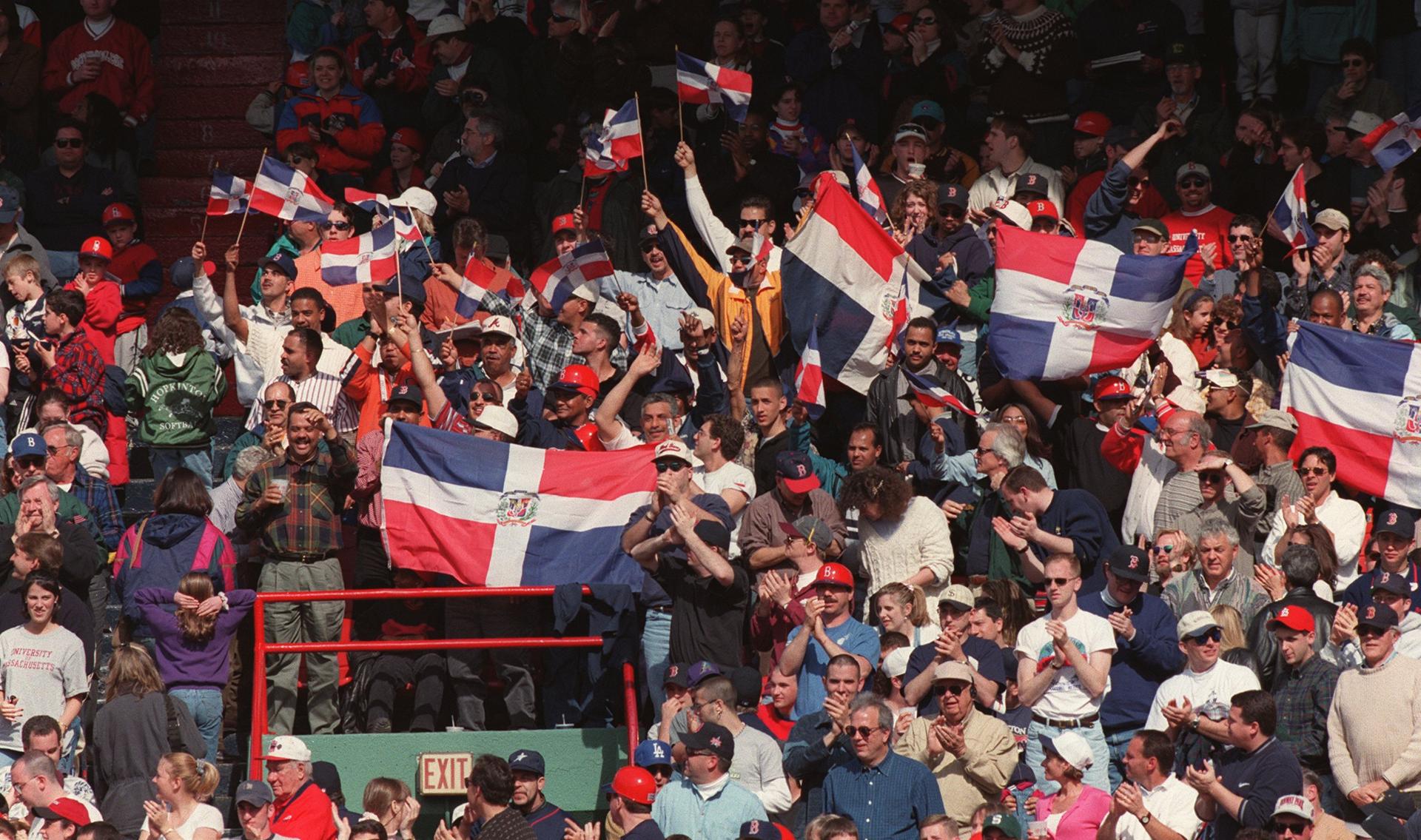Red Sox baseball legends David Ortiz and Pedro Martinez were among the best known Dominicans in Boston, and best loved by the local Dominican community. Courtesy of the Boston Globe.
According to recent federal census surveys, Dominicans are one of the two largest immigrant groups in Boston (along with the Chinese). They have been moving to the region since the 1950s, and especially after the death of Rafael Trujillo, a brutal dictator who was assassinated in 1961. A period of political instability followed, and the US intervened, sending troops to Santo Domingo in 1965. Elected in 1966, President Joaquín Balaguer proved to be another repressive leader who arrested and tortured his political opponents, driving many to emigrate. Balaguer’s industrial development program also stalled in the 1970s, leading to falling wages and widespread unemployment. Economic woes continued in the 1980s, with soaring consumer prices, joblessness, and currency devaluations that led many Dominicans to look for better opportunities abroad.

Birth province of Dominicans who immigrated to metro Boston from 1952-1999. From Enrico Marcelli, et al., Permanently Temporary? The Health and Socioeconomic Integration of Dominicans in Metropolitan Boston, Center for Behavioral and Community Health Studies, San Diego State University, 2009.
While most went to New York, a sizeable Dominican community formed in Boston by the late 1960s. Most of these early arrivals came from the northern Cibao region around the cities of Santiago and Salcedo. Another key source of migration to Boston was the Peravia province west of Santo Domingo, the capital city, which also sent many migrants. Beginning in the 1980s, other provinces such as La Altagracia on the east coast and María Trinidad Sánchez on the northeast coast also became popular sending regions (see map). Some Dominicans arrived directly from the Dominican Republic; others were secondary migrants from New York or came by way of Puerto Rico, making the journey in rickety boats called yolas.
The early arrivals tended to be more urban, educated, and middle-class, but in the 1980s and after, more working-class migrants arrived, some of them from small towns and rural areas. The biggest surge in immigration occurred in the late 1980s to mid-1990s, partially in response to the amnesty provision of the 1986 Immigration Reform and Control Act, which allowed formerly unauthorized migrants to adjust their status and sponsor other family members.
Settlement
Initially, Dominicans settled near existing Puerto Rican and Cuban communities in the South End, Roxbury and the Port area in Cambridge. In the 1980s, however, the South End and the Port saw their Latino populations decline under pressures of redevelopment and gentrification. During this period, Jamaica Plain became the most important new center of Dominican settlement. Many of its residents came from the village of Miraflores and other towns in the province of Peravia.
By the 1990s, however, gentrification and rising housing prices began to drive Dominicans out of Jamaica Plain, pushing many to nearby Roxbury and to neighborhoods such as Dorchester, Roslindale, South Boston, and Charlestown. Like other Latinos, they have spread widely across the city and beyond. By the twenty-first century, Dominicans were moving out of Boston to northern suburbs like Lynn, Chelsea, and Salem, and especially to nearby Lawrence, a Dominican-dominated city about 40 miles to the north. Today, the majority of Dominicans in the metro area live outside the city of Boston.
Work
Dominican immigrants originally found work at local shoe factories, garment shops, and other manufacturers, even as these industries were declining in the sixties and seventies. Dominicans today continue to be disproportionately concentrated in manufacturing, but many have shifted over to the service sector. They have been especially prevalent in janitorial work, food service, building maintenance, childcare, construction, and transportation. While the second generation has made gains in technical, professional and managerial occupations, lower educational attainment—both in the Dominican Republic and in Boston—continues to be a challenge.



